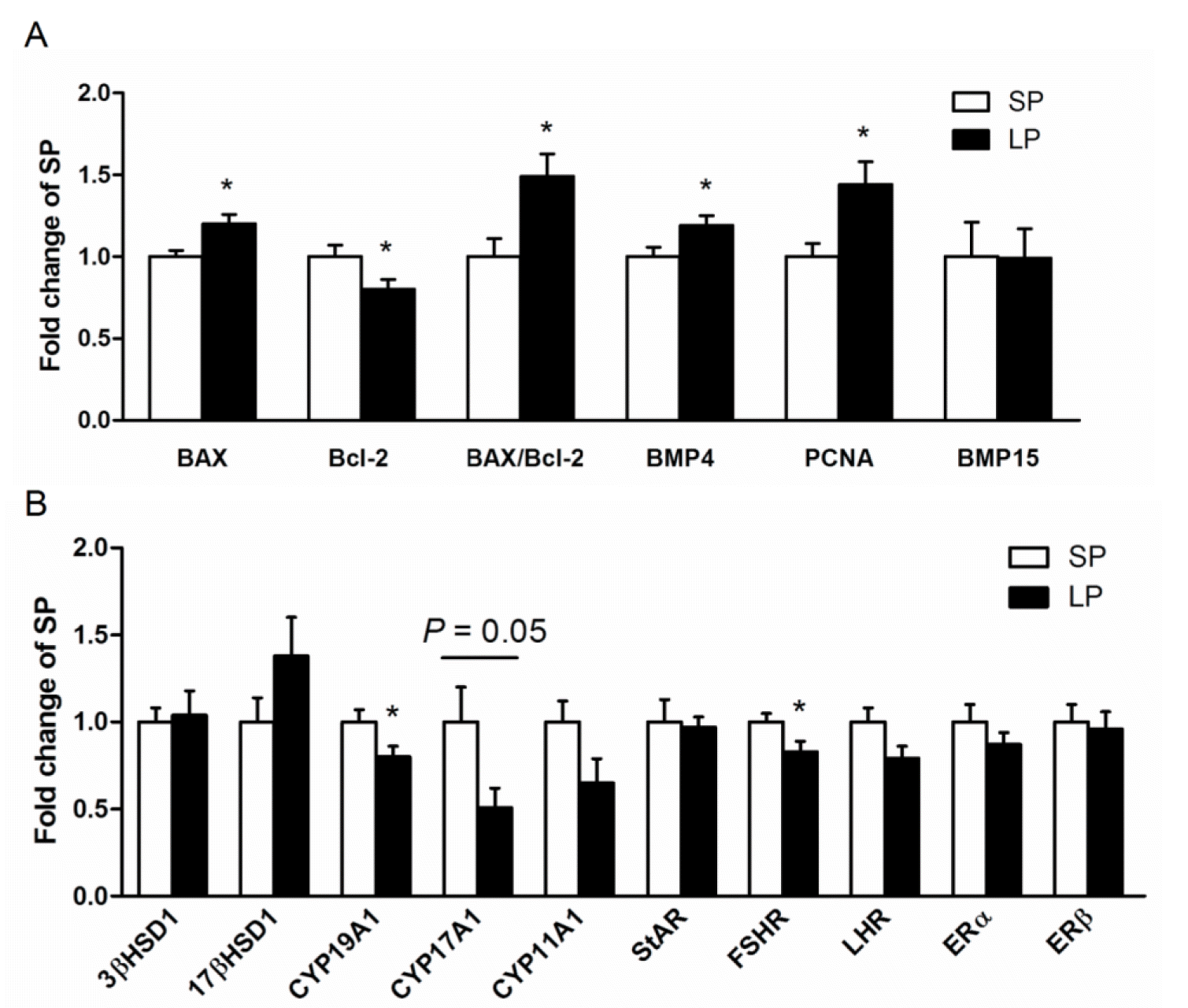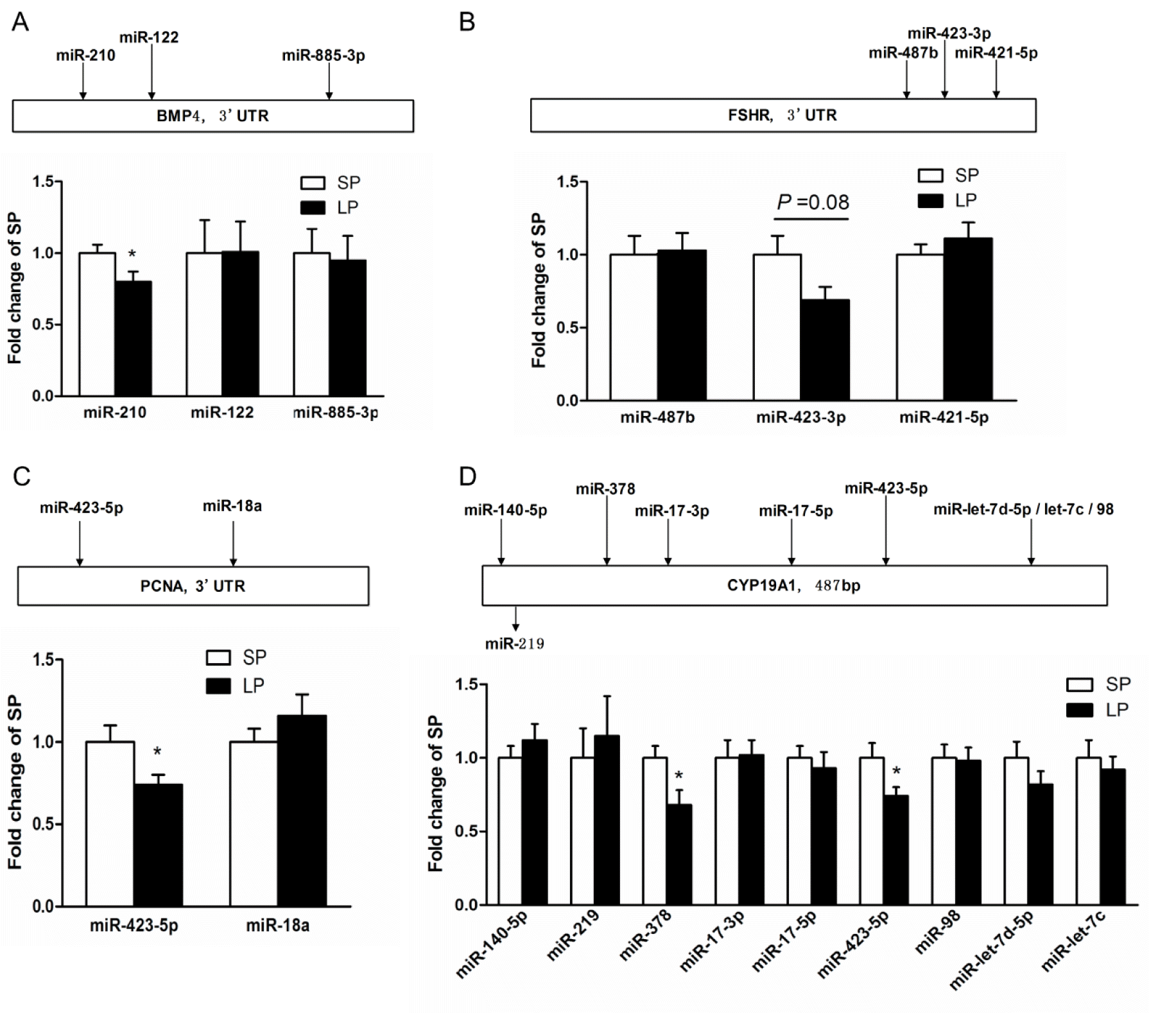Camp TA, Rahal JO, Mayo KE. 1991. Cellular localization and hormonal regulation of follicle-stimulating hormone and luteinizing hormone receptor messenger rnas in the rat ovary. Mol Endocrinol 5:1405–1417.


Chen Y, Jefferson WN, Newbold RR, Padilla-Banks E, Pepling ME. 2007. Estradiol, progesterone, and genistein inhibit oocyte nest breakdown and primordial follicle assembly in the neonatal mouse ovary
in vitro and
in vivo. Endocrinology 148:3580–3590.


da Silva Faria T, da Fonte Ramos C, Sampaio FJB. 2004. Puberty onset in the female offspring of rats submitted to protein or energy restricted diet during lactation. J Nutr Biochem 15:123–127.


da Silva Faria T, de Bittencourt Brasil F, Sampaio FJ, da Fonte Ramos C. 2008. Maternal malnutrition during lactation alters the folliculogenesis and gonadotropins and estrogen isoforms ovarian receptors in the offspring at puberty. J Endocrinol 198:625–634.


Ding W, Wang W, Zhou B, Zhang W, Huang P, Shi F, Taya K. 2010. Formation of primordial follicles and immunolocalization of PTEN, PKB and FOXO3a proteins in the ovaries of fetal and neonatal pigs. J Reprod Dev 56:162–168.


Durlej M, Knapczyk-Stwora K, Duda M, Galas J, Slomczynska M. 2011. The expression of FSH receptor (FSHR) in the neonatal porcine ovary and its regulation by flutamide. Reprod Domest Anim 46:377–384.


Faria TS, Brasil FB, Sampaio FJB, Ramos CF. 2010. Effects of maternal undernutrition during lactation on estrogen and androgen receptor expressions in rat ovary at puberty. Nutrition 26:993–999.


Fire A, Xu S, Montgomery MK, Kostas SA, Driver SE, Mello CC. 1998. Potent and specific genetic interference by double-stranded rna in caenorhabditis elegans. Nature 391:6669806–811.


Fortune J, Cushman R, Wahl C, Kito S. 2000. The primordial to primary follicle transition. Mol Cell Endocrinol 163:53–60.


Godfrey KM, Gluckman PD, Hanson MA. 2010. Developmental origins of metabolic disease: Life course and intergenerational perspectives. Trends Endocrin Metab 21:199–205.

Grzesiak M, Knapczyk-Stwora K, Duda M, Slomczynska M. 2012. Elevated level of 17β-estradiol is associated with overexpression of
FSHR,
CYP19A1, and
CTNNB1 genes in porcine ovarian follicles after prenatal and neonatal flutamide exposure. Theriogenology 78:2050–2060.


Ibáñez L, Potau N, Ferrer A, Rodriguez-Hierro F, Marcos MV, de Zegher F. 2002. Reduced ovulation rate in adolescent girls born small for gestational age. J Clin Endocrinol Metab 87:3391–3393.


Iwasa T, Matsuzaki T, Murakami M, Kinouchi R, Gereltsetseg G, Yamamoto S, Kuwahara A, Yasui T, Irahara M. 2011. Delayed puberty in prenatally glucocorticoid administered female rats occurs independently of the hypothalamic Kiss1-Kiss1R-GnRH system. Int J Dev Neurosci 29:183–188.


Jia Y, Cong R, Li R, Yang X, Sun Q, Parvizi N, Zhao R. 2012. Maternal low-protein diet induces gender-dependent changes in epigenetic regulation of the glucose-6-phosphatase gene in newborn piglet liver. J Nutr 142:1659–1665.


Kertesz M, Iovino N, Unnerstall U, Gaul U, Segal E. 2007. The role of site accessibility in microrna target recognition. Nat Genet 39:1278–1284.


Kezele P, Skinner MK. 2003. Regulation of ovarian primordial follicle assembly and development by estrogen and progesterone: Endocrine model of follicle assembly. Endocrinology 144:3329–3337.


Liu X, Wang J, Li R, Yang X, Sun Q, Albrecht E, Zhao R. 2011. Maternal dietary protein affects transcriptional regulation of myostatin gene distinctively at weaning and finishing stages in skeletal muscle of Meishan pigs. Epigenetics 6:899–907.


Meikle D, Westberg M. 2001. Maternal nutrition and reproduction of daughters in wild house mice (Mus musculus). Reproduction 122:437–442.


Nilsson EE, Skinner MK. 2003. Bone morphogenetic protein-4 acts as an ovarian follicle survival factor and promotes primordial follicle development. Biol Reprod 69:1265–1272.


Rae MT, Kyle CE, Miller DW, Hammond AJ, Brooks AN, Rhind SM. 2002. The effects of undernutrition, in utero, on reproductive function in adult male and female sheep. Anim Reprod Sci 72:63–71.


Rucker EB, Dierisseau P, Wagner KU, Garrett L, Wynshaw-Boris A, Flaws JA, Hennighausen L. 2000. Bcl-x and bax regulate mouse primordial germ cell survival and apoptosis during embryogenesis. Mol Endocrinol 14:1038–1052.


Sirotkin AV, Ovcharenko D, Grossmann R, Lauková M, Mlynček M. 2009. Identification of micrornas controlling human ovarian cell steroidogenesis via a genome-scale screen. J Cell Physiol 219:415–420.


Sloboda DM, Hickey M, Hart R. 2011. Reproduction in females: The role of the early life environment. Hum Reprod Update 17:210–227.


Sun R, Lei L, Cheng L, Jin ZF, Zu SJ, Shan ZY, Wang ZD, Zhang JX, Liu ZH. 2010. Expression of GDF-9, BMP-15 and their receptors in mammalian ovary follicles. J Mol Histol 41:325–332.


Sun Y, Lin Y, Li H, Liu J, Sheng X, Zhang W. 2012. 2, 5-hexanedione induces human ovarian granulosa cell apoptosis through bcl-2, bax, and caspase-3 signaling pathways. Arch Toxicol 86:205–215.


Tanwar PS, O’Shea T, McFarlane JR. 2008.
In vivo evidence of role of bone morphogenetic protein-4 in the mouse ovary. Anim Reprod Sci 106:232–240.


Tománek M, Chronowska E. 2006. Immunohistochemical localization of proliferating cell nuclear antigen (PCNA) in the pig ovary. Folia Histochem Cytobiol 44:269–274.

Xu B, Hua J, Zhang Y, Jiang X, Zhang H, Ma T, Zheng W, Sun R, Shen W, Sha J, Cooke HJ, Shi Q. 2011. Proliferating cell nuclear antigen (PCNA) regulates primordial follicle assembly by promoting apoptosis of oocytes in fetal and neonatal mouse ovaries. Plos One 6:1e16046













 PDF Links
PDF Links PubReader
PubReader ePub Link
ePub Link Full text via DOI
Full text via DOI Full text via PMC
Full text via PMC Download Citation
Download Citation Print
Print





